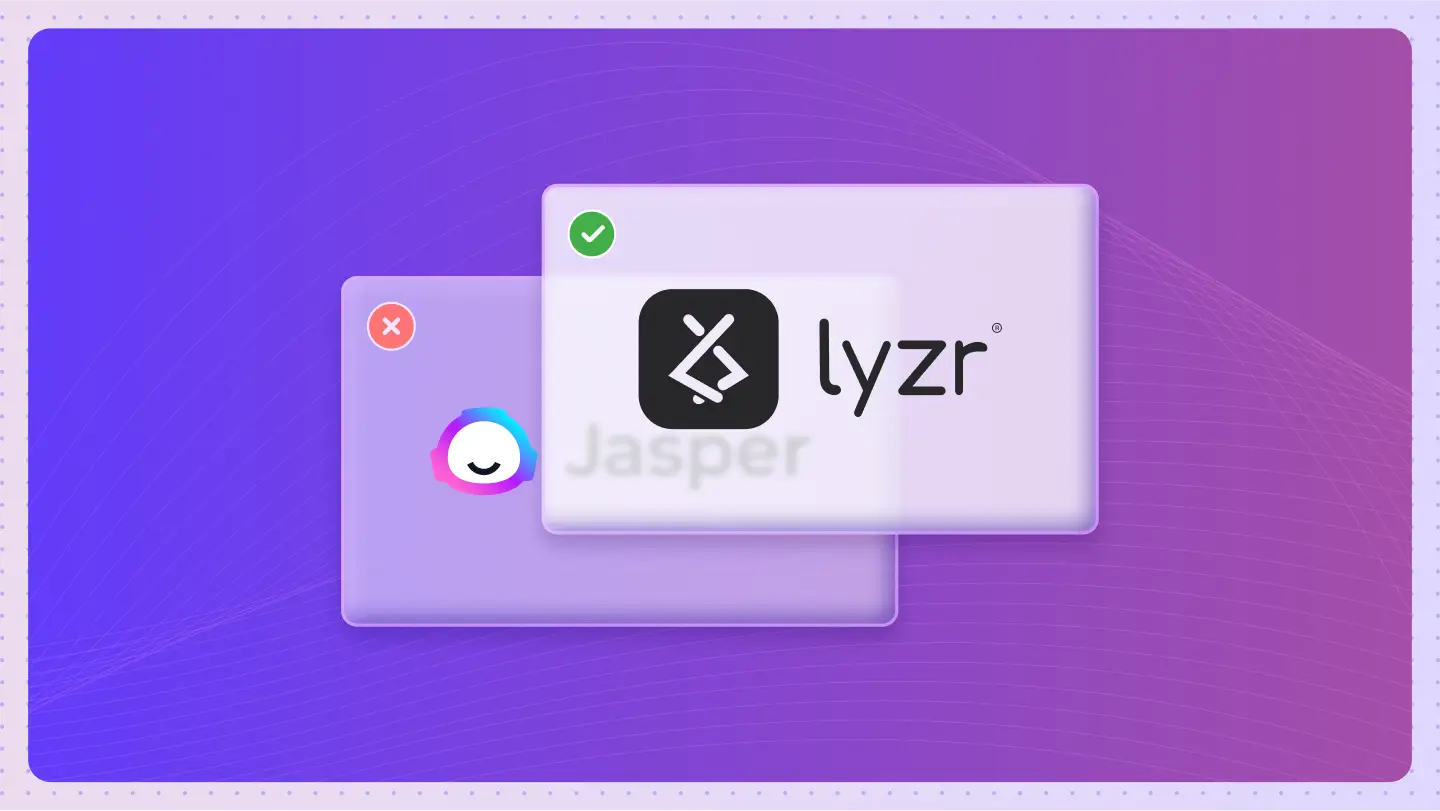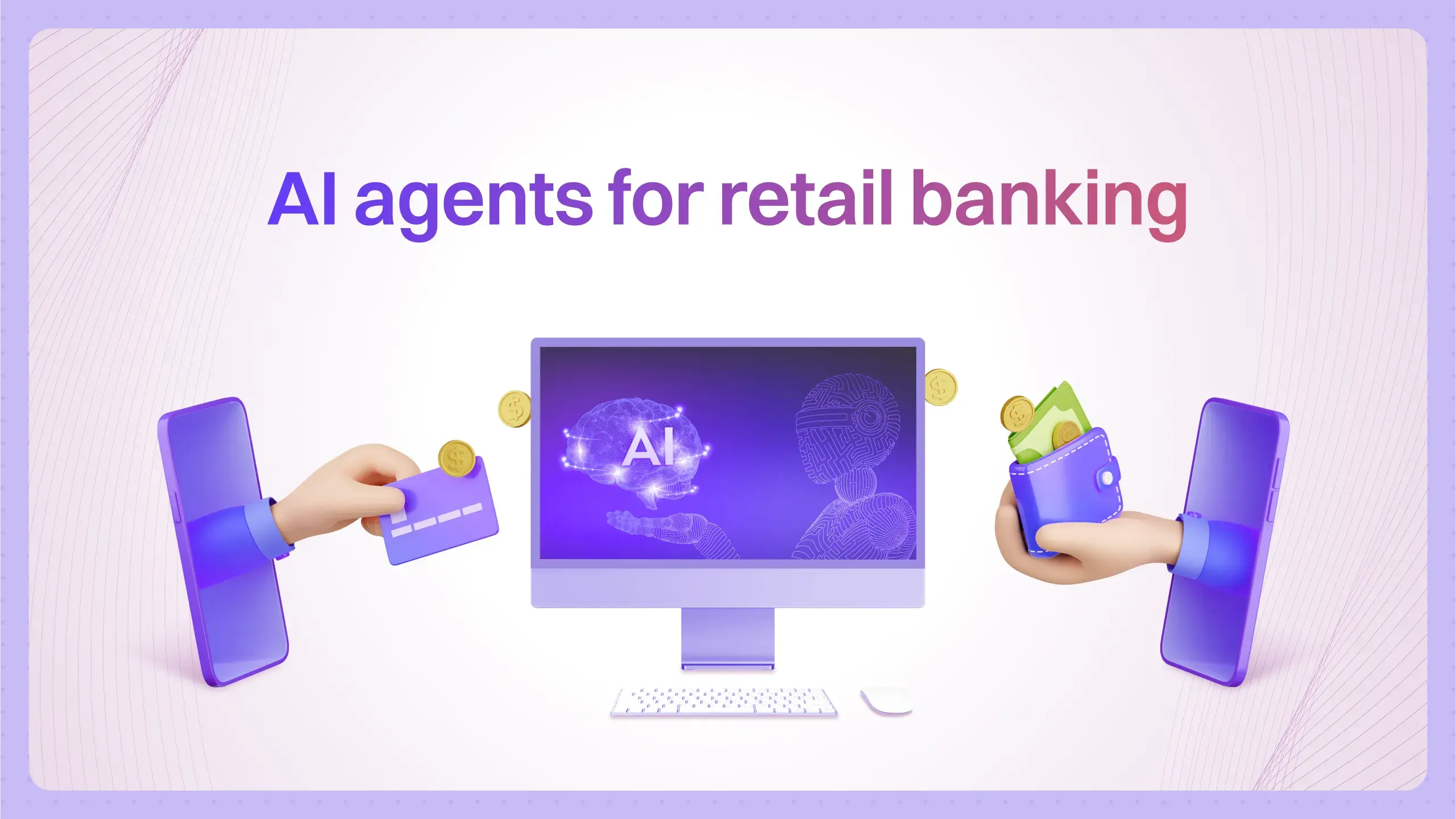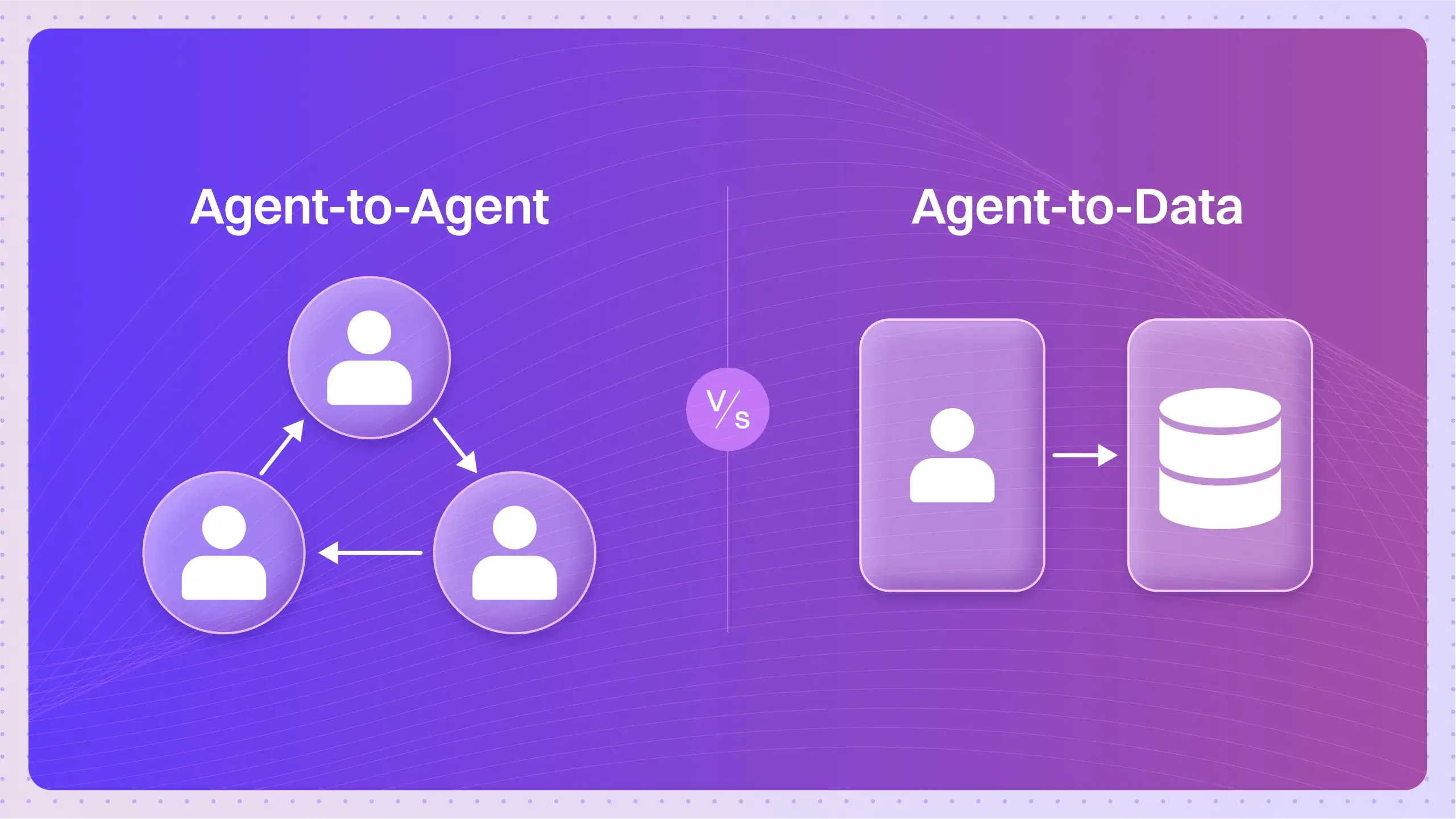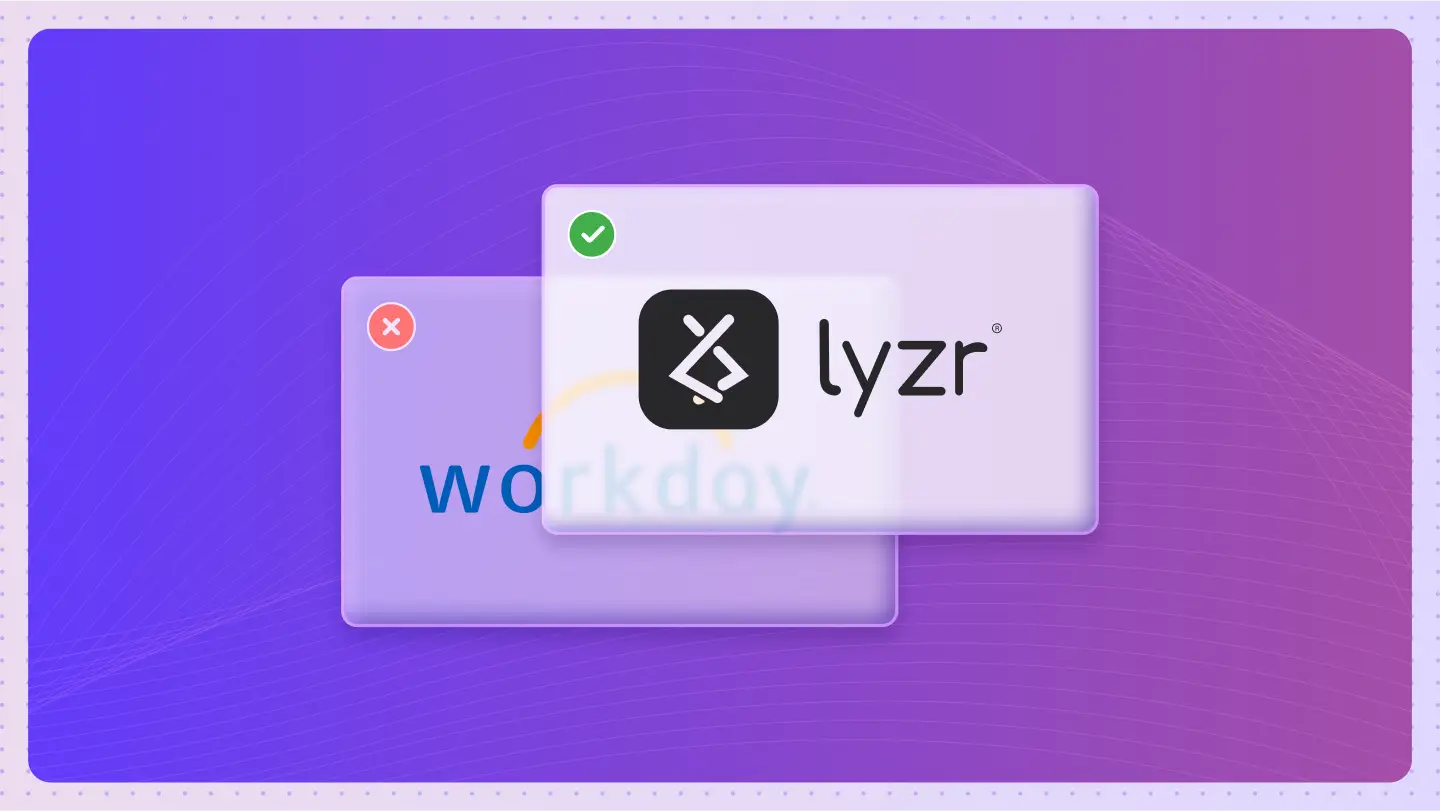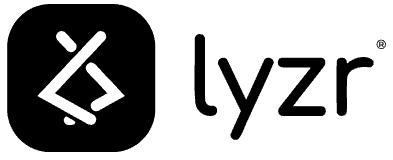Table of Contents
ToggleRemember the last time your content team missed a crucial deadline because they were stuck switching between five different tools? You know the feeling, marketing needs blog posts, sales wants personalized outreach, and compliance demands everything follows brand guidelines. Meanwhile, your team burns hours on manual workflows instead of strategic thinking.
This scenario plays out daily in boardrooms across India and beyond. While AI content tools promise streamlined workflows, many business leaders find themselves trapped in a web of disconnected systems, escalating costs, and frustrating limitations. The result? Fragmented workflows that drain productivity instead of boosting it.
Here’s what’s really happening: The AI content creation market is absolutely booming, valued at $8.5 billion in 2024 and projected to hit $24.6 billion by 2033. But not all AI platforms are built for enterprise-scale challenges. That’s exactly where the search for a genuine Jasper AI alternative becomes mission-critical.
What’s Really Going On With Traditional AI Content Tools
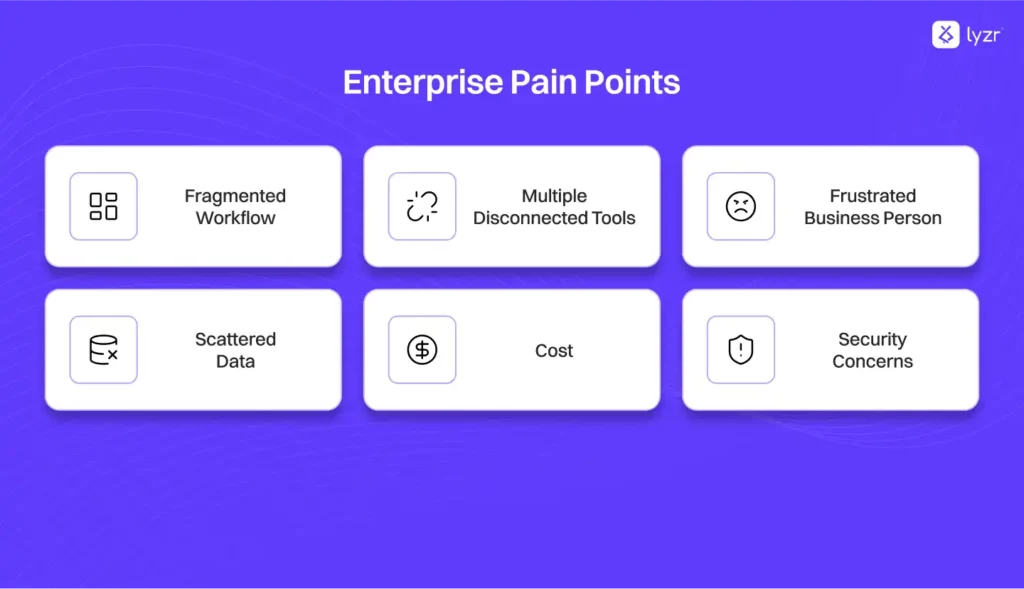
Let’s be honest about Jasper AI’s impact. When it first launched, it genuinely revolutionized how marketers and content creators approached their work. With over 50 templates and solid SEO integration, it seemed like the holy grail solution everyone had been waiting for.
But here’s where things get interesting. As enterprises started scaling their operations, some concerning patterns emerged. According to McKinsey’s latest research, 78% of organizations now use AI in at least one business function, yet many still struggle with the same old problems: tool fragmentation and workflow inefficiencies.
The harsh reality? Template-based solutions work brilliantly for basic content creation, but they fall short when addressing the complex, interconnected needs of modern enterprises. Traditional AI writing tools operate like isolated islands, each requiring manual bridges to connect with the next step in your process.
Here’s what enterprises are discovering doesn’t work:
Template-driven approaches that box in creativity and limit customization options. Most AI content tools demand significant human babysitting for quality control. Getting these systems to play nicely with existing enterprise infrastructure remains a headache. Data privacy concerns create deployment roadblocks. And perhaps most importantly, there’s zero orchestration between different AI functions.
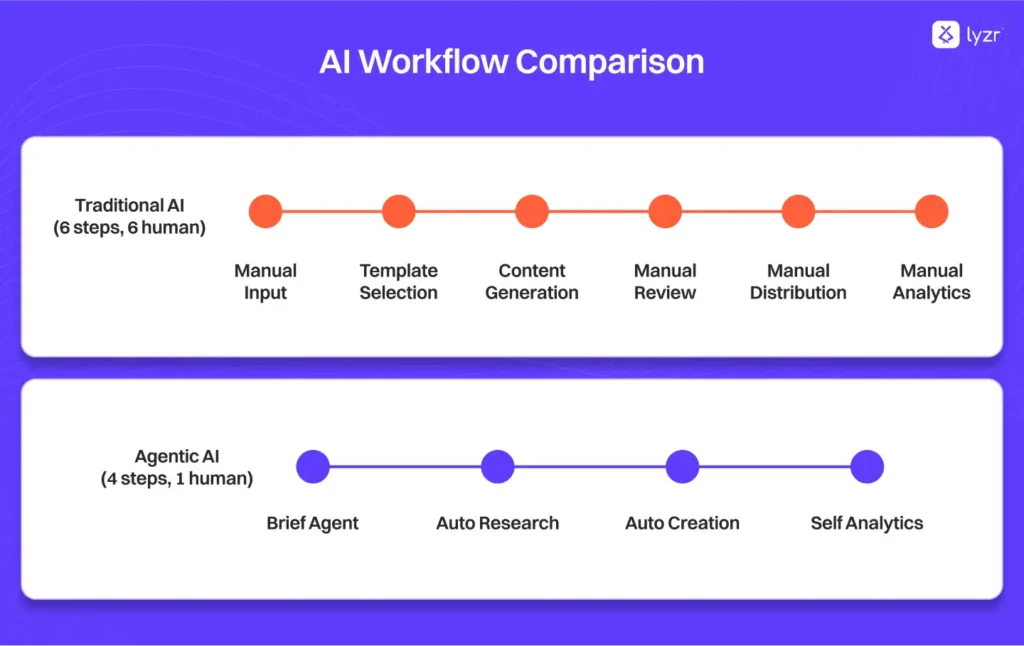

The Growing Enterprise Pain Point Nobody Talks About
According to HR automation research, 76% of HR leaders believe they’ll fall behind competitors without AI adoption within 12-24 months. Meanwhile, enterprise AI budget data shows 75% of organizations expect their AI spending to grow over the next year.
Yet here’s the kicker: many organizations report genuine frustration with their current AI investments. Why? Because the real challenge isn’t content quality, it’s workflow orchestration.
Think about your typical marketing campaign workflow. You need someone to research market trends, analyze competitor content, generate personalized messaging, optimize for different channels, schedule publication, and measure performance. That’s easily six different tools and countless hours of coordination.
Traditional AI content tools like Jasper AI address maybe one or two pieces of this puzzle. The rest? That’s all manual work falling on your already-stretched team.
The Revolution: Agentic AI Platforms
This is precisely where Lyzr AI fundamentally changes the conversation. Instead of just another content generation tool, it’s built on the industry’s first enterprise-grade agentic framework.
What does that actually mean in practical terms? Rather than having a single AI assistant, you’re commanding an entire AI workforce that collaborates, learns, and executes complex workflows autonomously.
Consider Lyzr’s autonomous agents: Skott (the AI marketer) and Jazon (the AI sales development rep). These aren’t just sophisticated content generators, they’re fully autonomous agents capable of research, strategy development, content creation, distribution, and performance analysis. All in one seamless flow.
Here’s what makes this approach revolutionary: Lyzr’s Agent Studio offers both managerial orchestration for dynamic workflows and DAG orchestration for well-defined processes. This means you can build simple single-agent solutions or complex multi-agent systems that rival the sophistication of entire human teams.
The numbers tell a compelling story. Lyzr’s case studies show clients achieving remarkable revenue growth, with some companies jumping from $100,000 to $1.5 million in annual recurring revenue in less than 60 days.
The Feature Showdown: Why Numbers Matter
| Feature | Jasper AI | Lyzr AI |
| Content Creation | 50+ pre-built templates | Autonomous customizable agents |
| Workflow Automation | Limited automation | End-to-end workflow orchestration |
| Multi-Agent Support | Single-agent only | Multi-agent collaboration |
| Enterprise Security | Standard cloud security | Enterprise-grade, on-premise options |
| Pricing Model | $39-69+/month per user | $99-999/mo (unlimited users) |
| Integrations | SEO tools, basic apps | Popular LLMs, Custom Tools |
| Data Privacy Options | Cloud-only, limited control | Full data control, hybrid deploy |
| Marketing content | Marketing content | Enterprise automation |
Let’s get specific about the differences between traditional AI platforms and agentic AI solutions:
Workflow Automation: While Jasper AI offers limited automation with mostly manual handoffs between steps, Lyzr’s agentic workflows provide end-to-end orchestration where agents collaborate autonomously.
Enterprise Security: Jasper AI relies on cloud-based infrastructure with standard security measures. Lyzr’s enterprise solutions offer enterprise-grade security with on-premise and private cloud deployment options addressing the data privacy concerns affecting 49.5% of businesses implementing AI.
Integration Capabilities: While Jasper AI integrates primarily with SEO tools and basic business applications, Lyzr’s agent builder supports various large language models and connects with various enterprise systems, including CRM, ERP, and cloud platforms.
Economic Impact: Here’s where the math gets really interesting. Jasper’s pricing ranges from $39-69+ per user monthly. Lyzr’s pricing model offers plans from $99-999 monthly with unlimited users often delivering significant cost savings for growing teams.
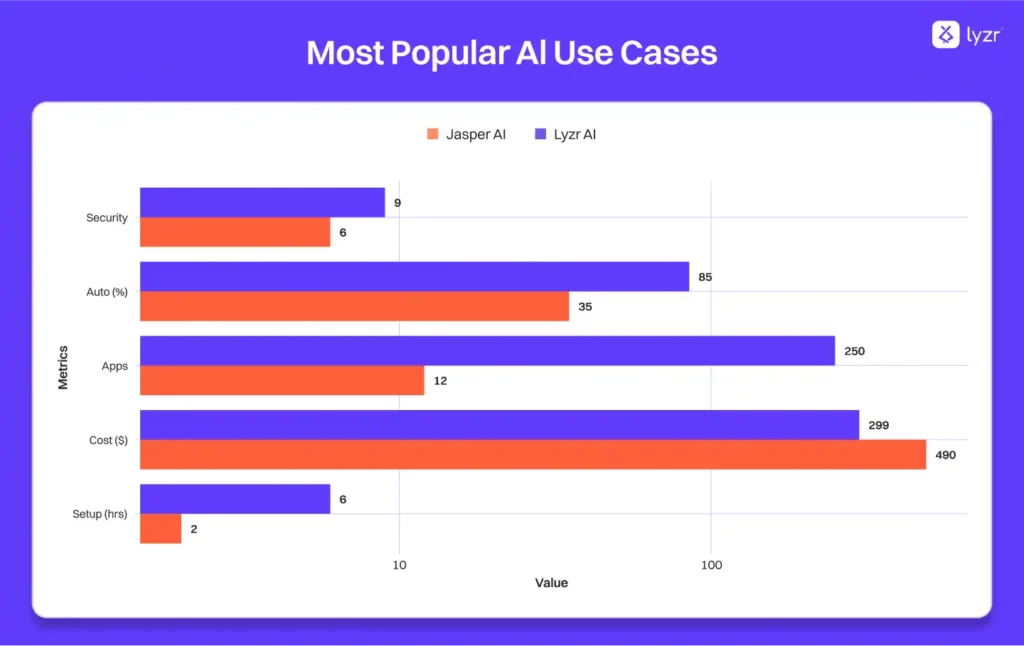

Quantitative comparison of key performance metrics between Jasper AI and Lyzr AI
Real-World Impact: The Skott Success Story
Let me paint a picture of what this looks like in your day-to-day operations. Imagine launching a comprehensive B2B marketing campaign. With traditional tools, you’re looking at weeks of coordination across multiple platforms, constant context-switching, and manual oversight at every step.
With Lyzr’s Skott agent, you brief the agent once on your campaign objectives. Skott then autonomously conducts market research, identifies target audiences, creates personalized content for multiple channels, optimizes for SEO, schedules publications, engages with audience responses, and provides detailed performance analytics.
The time savings are genuinely dramatic. What typically requires weeks of coordination across multiple tools and team members becomes a streamlined, autonomous process that runs 24/7.
The ROI Reality Check
Here’s where financial justification becomes absolutely compelling. According to enterprise automation research, highly automated companies are 6 times more likely to achieve revenue growth exceeding 15% compared to companies with low automation levels.
Traditional AI content tools struggle to demonstrate clear ROI because their impact is limited to content creation efficiency. Agentic AI platforms deliver measurable returns across multiple business functions simultaneously.
Consider these ROI drivers:
Reduced tool consolidation costs as multiple point solutions get replaced by comprehensive platforms. Decreased time-to-market for campaigns through automated workflows. Improved content consistency and brand compliance across all channels. Enhanced personalization at scale without proportional increases in human resources.
The market data supports this shift. Research shows companies using automation observe up to 91% employee retention rates, while 85% of employers using AI report time savings and improved efficiency.
Market Trends Driving Change
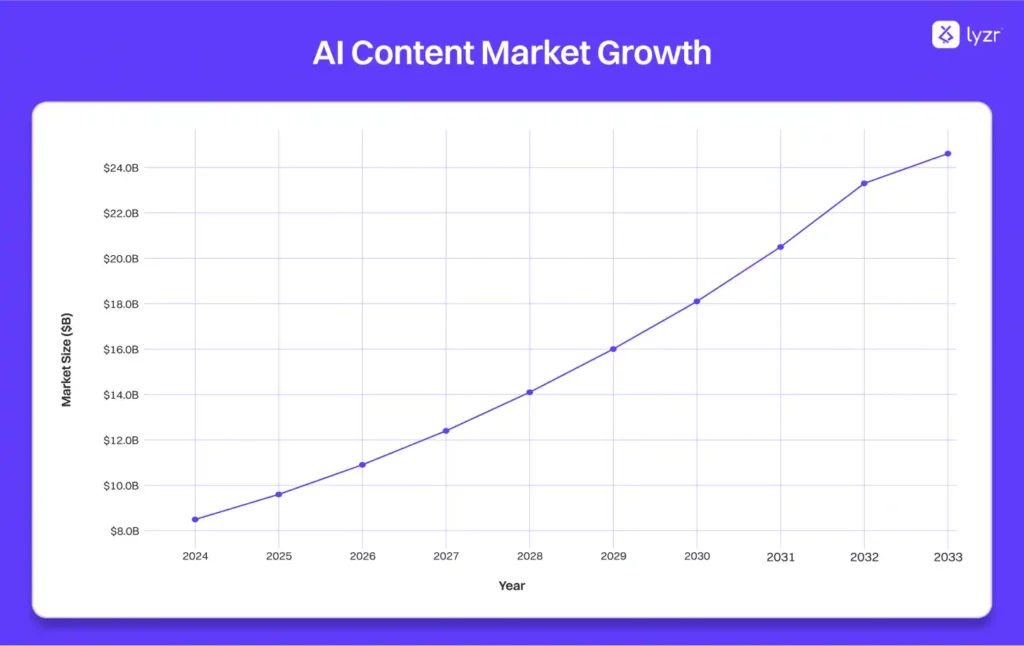

The timing for this transition couldn’t be more perfect. According to AI market projections, the content creation sector is experiencing unprecedented growth at a 13.4% compound annual growth rate through 2033.
But within this growth, we’re seeing a clear trend toward more sophisticated, enterprise-grade solutions. Enterprise research indicates 63% of organizations prioritize internal AI use cases before developing customer-facing applications signaling a focus on operational efficiency and process automation.
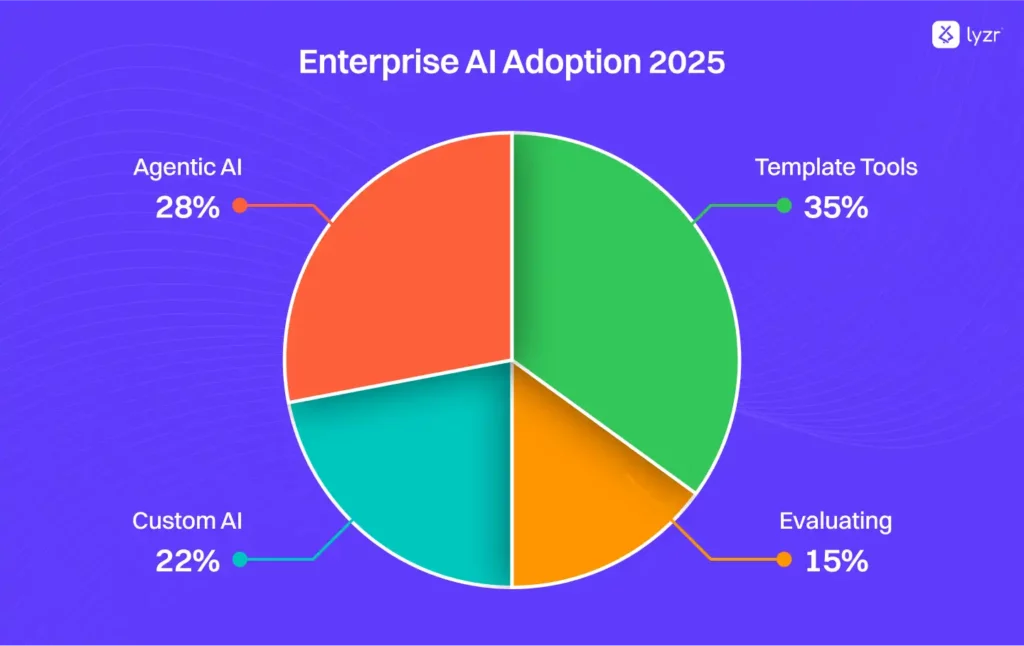

Early adopters are seeing significant advantages. Companies that embrace agentic AI frameworks early are establishing competitive moats that will be difficult for competitors to overcome.
The competitive landscape is shifting rapidly. While traditional AI content tools compete primarily on template variety and ease of use, agentic platforms compete on workflow sophistication and measurable business impact.
Implementation Strategy That Actually Works


So how do enterprise leaders successfully transition from traditional AI content tools to agentic platforms? The secret lies in strategic phasing rather than wholesale replacement.
Phase 1: Assessment and Planning
Start by mapping current AI tool usage and identifying workflow bottlenecks. Evaluate which processes require orchestration versus simple automation. Determine data privacy and compliance requirements that will influence your deployment options.
Phase 2: Pilot Implementation
Select a specific use case where agentic AI can demonstrate clear value. Marketing campaign orchestration, sales development automation, or HR onboarding processes often make ideal starting points. Use Lyzr’s documentation to measure performance against current processes.
Phase 3: Scaling and Integration
Gradually expand implementation to additional business functions. Leverage the platform’s multi-agent capabilities to create increasingly sophisticated workflows. Train teams to collaborate with AI agents rather than simply use AI tools.
Building Internal Capability
The most successful implementations involve building internal expertise alongside platform adoption. Lyzr’s resources and partner program help organizations develop internal champions who understand agentic AI principles and can accelerate adoption across teams.
Common Questions About Platform Migration
Is Lyzr AI suitable for smaller teams, or only large enterprises?
While Lyzr’s enterprise solutions are designed with complex organizational needs in mind, smaller teams often see even greater relative impact from workflow automation. The platform’s unlimited user model means growing teams avoid escalating per-seat costs that make traditional tools expensive at scale.
How does the learning curve compare between template-based and agentic platforms?
Traditional tools focus on template selection and prompt optimization straightforward but limited. Agentic platforms require understanding workflow design and agent orchestration concepts, which has a steeper initial learning curve but delivers dramatically greater capability.
Can agentic platforms handle industry-specific compliance requirements?
Yes, significantly better than cloud-only solutions. Lyzr’s compliance features include native security modules with options for private cloud and on-premise deployment. This addresses regulatory requirements that cloud-only solutions simply cannot meet.
What’s the realistic timeline for ROI after switching platforms?
Most organizations see initial productivity improvements within 30-60 days of implementation. However, full ROI typically materializes over 6-12 months as teams develop more sophisticated workflows and agent orchestrations. Starting with high-impact use cases accelerates this timeline.
How does content quality compare between different approaches?
Template-based tools excel at producing consistent content within predefined formats. Agentic platforms provide more contextual and personalized output because agents incorporate real-time research, audience analysis, and cross-channel optimization. The quality difference becomes more pronounced for complex, multi-step content strategies.
The Future is Already Here
As we look toward the remainder of 2025 and beyond, the trajectory is crystal clear. The future of enterprise AI isn’t about better content generation tools, it’s about intelligent systems that orchestrate complex business processes autonomously.
According to AI statistics, by 2030, automation may affect up to 47% of jobs in developed countries. But this disruption creates massive opportunities for organizations that embrace agentic AI platforms early.
The window for competitive advantage is narrowing. As agentic AI platforms become more accessible and proven, the differentiator won’t be whether organizations use AI, but how sophisticated their AI orchestration becomes.
For enterprise leaders evaluating their AI content strategy, the choice isn’t simply between Jasper AI alternatives. It’s between incremental improvement through better content tools versus transformational change through agentic automation.
The organizations that recognize this distinction and act on it will define their industries’ futures. The question isn’t whether you’ll eventually need agentic AI capabilities. It’s whether you’ll lead the transition or follow others who moved first.
Ready to explore how agentic AI can transform your enterprise workflows? Book a demo and discover why forward-thinking organizations are making the switch from traditional content tools to comprehensive agentic platforms.
Book A Demo: Click Here
Join our Slack: Click Here
Link to our GitHub: Click Here

